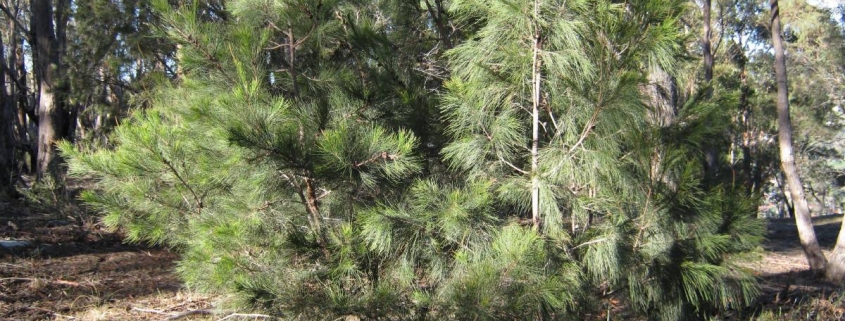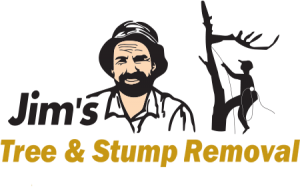Tree Removal & Pruning Guidelines in the City of Boroondara
Removing a tree in the Boroondara Council region has become noticeably more complicated since its 2017 Community Plan identified the protection and increase of canopy tree cover on private as its priority. This objective came in response to a 2016 canopy cover assessment which found that despite an overall increase of canopy cover in the municipality since 2006, canopy cover on private land had fallen.
About the Boroondara Council Area
Comparing data from 2006, 2011 and 2016, the canopy cover study of the Boroondara region found that the suburbs of Kew and Kew East had the highest canopy cover proportion at approximately 28% of total land area. Hawthorn East and Balwyn North on the other hand were revealed to have the lowest canopy coverage with just 18.5%.
Suburbs that are included within this region include:
- Ashburton
- Balwyn
- Balwyn North
- Burwood
- Camberwell
- Canterbury
- Deepdeene
- Glen Iris
- Glenferrie South
- Greythorn
- Hawthorn
- Hawthorn East
- Kew
- Kew East
- Mont Albert
- Surrey Hills

The Boroondara Council website highlights the numerous potential positive effects of increasing tree canopy cover in an urban community, including:
- Reducing the impact of the urban heat island effect
- Reducing the effects of climate change
- Reducing temperatures in and around buildings
- Reducing stormwater runoff
- Absorbing pollution
- Providing habitat and promoting biodiversity.
Boroondara Council Tree Removal Laws
The Boroondara Council has an expansive list of protected trees on their Significant Tree Register. There are also protections placed on canopy trees on private property with penalties for violations reaching $2,000 per offence. As such, it is important that you familiarise yourself with the local tree protection laws prior to beginning any tree works.
For trees on Council land or on neighbouring properties, follow the links to find out how to submit a request to prune or remove a tree.
For trees on your property, first find out whether you need a Planning Permit by checking whether your property is within the Significant Landscape Overlay (SLO) or the Vegetation Protection Overlay (VPO). You can do this by visiting the Planning Maps Online to get a Planning Property Report, by checking the Boroondara Planning Scheme or by contacting the Statutory Planning team on 9278 4888.
If your property falls within the SLO or VPO, you will need to Apply for a Planning Permit.
 Even if you are not within those areas, you’ll need to check whether your tree is protected.
Even if you are not within those areas, you’ll need to check whether your tree is protected.
If your tree is not within the SLO or VPO, is not protected and you have a Planning Permit, then you may proceed to contacting your local Jim’s Trees Franchise.
If your tree is protected, you will need to submit an Application for a Tree Protection Local Law Permit to the Council offices in order to proceed. These applications tend to take around 10 days to process and can cost $40/tree for pruning permits and $80/tree for removals. A guide to completing this application can be found here.
As part of the process, within 10 days of submitting your application an Arborist will visit your property to inspect the tree and assess the merits of your request based on a range of factors that can be found on the Council website.
If your application is successful, a permit valid for 12 months will be sent to you. If your application is unsuccessful you have 60 days to apply for an internal review.
Why Remove a Tree?
Jim’s Trees shares the communities belief in protecting and expanding the local urban forest. Part of maintaining a healthy tree population is the maintenance of healthy trees and the removal of dangerous ones.
Avneet, who has been running a Jim’s Trees franchise in and around the Boroondara Council region for the last seven years and is studying a Cert. 3 in Arboral Culture, says there is a wide range of hazards they must be aware of when assessing a tree.
“When the trees are either damaging the property or leaning above the houses, damaging their gutters, filling up their roof, causing rot, you get all sorts of issues or their root system could start cracking or uplifting their stumps, their pavement, driveways start to get cracked, all those things happen and that’s when they feel the need to remove it, prune it or keep it under control.”
Jim’s Tree Removal
When it comes to removing a tree, your local Jim’s Trees franchisee will be your first point of contact. For Avneet, this means helping clients over the phone and following up quickly with an onsite quote:
“It depends job to job. For example, if we get a lead from the call centre, we basically try to understand what sort of tree we’re talking about over the phone before we go to have a look…most of the time I’ll know whether that would be a significant tree or not but what I would do is book in a time the very next day to give them a quote.”
Arvinder, who has been running a Jim’s Trees franchise in and around the Casey Council region for the last three years and is studying a Cert. 3 in Arboral Culture, says that the next step is to give the client the best recommendations based on all the important elements:
“Trees close to homes, branches hanging over homes, oversized branches, the structure of the tree, if they have decay in the roots, the condition of the barrel, the condition of the soil, uneven weight distribution. All of these things can give us a good idea of the safety of a tree, so we look at all these things and guide the client to the best options, whether that’s roping, pruning for weight reduction or removing the tree”.
The final step is to get all the necessary permits from the council and carry out the work. Avneet says that this can all be completed in a short space of time:
“10 Days to get a permit if a permit is required. Then it could be a week after that. 90% of my quotes are done within 24 hours, then we carry out the work within a week.”
Alternatives to Removing a Tree
Three key alternatives provided by Jim’s Trees that customers should be aware of are pruning, lopping and bracing.
Pruning
Avneet says that the uneven weight distribution of trees is one of the major causes of trees falling, a problem that is often a direct result of improper pruning. Regular pruning and maintenance of trees is vital to the trees health and the safety of the community, Avneet says:
“Maintenance is a very important aspect, every tree needs to be maintained and every tree needs to maintained at different times of the year. Just like how we maintain our gardens, trees need to be maintained as well on a yearly basis, which not many people do and they only do it when they don’t have a choice left. So that’s what happens.”
Regular pruning of trees within the Australian Pruning Standards can help ensure the health of your tree, prevent the tree becoming dangerous and prevent the need for removal.
Lopping
Lopping, or the removal of tree limbs, is an important strategy in safeguarding your home against falling branches and in the overall health of a tree. While most tree types are susceptible to the dangers of overweight branches, Avneet says that Gum Trees are especially prone to this problem:
“A lot of gum trees are very brittle, with a change of temperature and rain and a bit of a storm, a healthy looking gum tree could snap off and that happens all the time. There are certain trees that are a lot more hardy, that can withstand weather, a lot more like palms for example, I’ve never seen a palm fall down, whereas gum trees fall down all the time. Every tree is different.”
Bracing
Bracing a tree is an alternative to removal that can not only save you money on removing the tree, but also reduce other property costs while helping to preserve the property’s natural beauty, says Malcolm:
“Roping it up and bracing it so that if branches fail they stay caught in the ropes and we can come back and fix it up for them is a great alternative to removing a tree which can make the property hot, increase the air-conditioning bill, the power bill and change the whole aesthetic of the property.”
While some arborists like Malcolm will recommend bracing, Avneet generally prefers to seek alternative options:
“I’ve only done it a couple of times. Bracing is like a contract, bracing is a big liability, once you start doing that then you have to stay on top of it, because you might need to go back every year and tighten those braces up and after every storm you might need to go and double check. So there’s a fair bit of cost associated with it.”
No Cutting Corners: Jim’s Approach
For all of our Arborists, safety is the number one priority. Ensuring the safety of all staff, clients and pedestrians is at the forefront of each and every job. Before starting any job, a Job Safety Analysis (JSA) is taken to check for all potential hazards of the tree and its surrounds. All staff onsite then participate in a Toolbox Meeting to discuss the best and safest procedure for that individual tree.
If the job is near a road, signs and cones are put out to manage traffic and pedestrians, if necessary a section of road may need to be blocked to ensure that no one passes through a hazardous zone.
The training provided to all our staff is designed to ensure the highest quality and safety is met.
Arvinder believes that it is the focus on the needs of the clients that elevates Jim’s above the rest:
“Other tree cutting services don’t focus on the needs of the customer, they think the job is done once the tree is down. We do a full service cleanup afterwards.”
Common tree types
- Black she-oak (Allocasuarina littoralis)
- Blackwood (Acacia melanoxylon)
- River red gum (Eucalyptus camaldulensis)
- Yellow box (Eucalyptus melliodora)
- Yellow gum (Eucalyptus leucoxylon subsp. connata)
Cutting to the Chase
Removing a tree in the Boroondara Council can seem a little overwhelming, however it is a necessary part of maintaining a safe and healthy urban forest. While the rules and regulations of local treeworks can be complicated, there are local experts ready to guide you through the process. For help with the application process, or to start your next treeworks, contact your nearest Jim’s Trees today.
[jims_author_box av_uid=’av-2dg2s9′]






